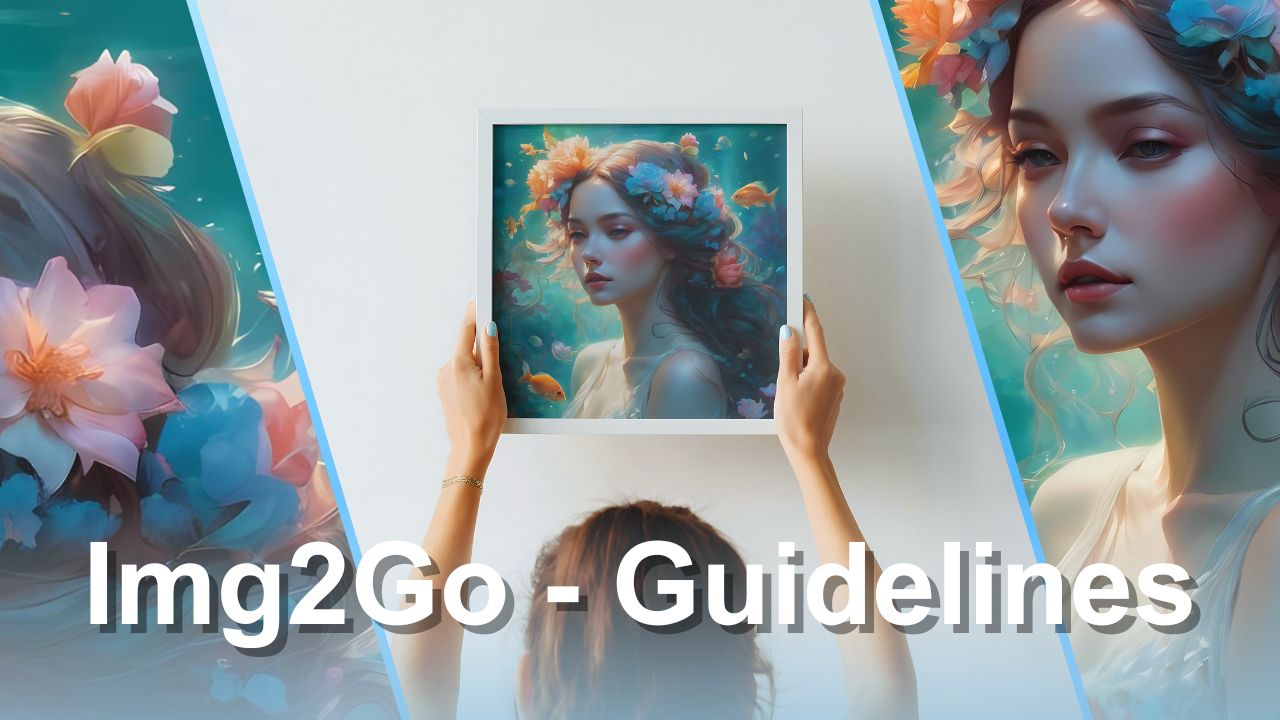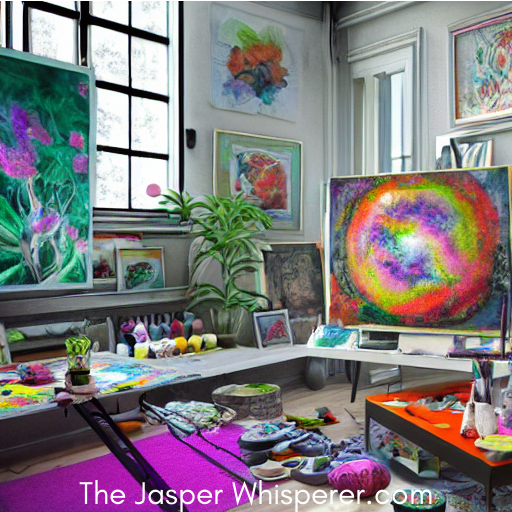You’re scrolling through your favorite design platform, and there it is—a stunning image that captures your imagination. But there’s a twist; it’s not captured by a photographer or painted by an artist.
It’s AI-generated. Suddenly, a question pops into your mind: “Can I use this for my business? ” You’re not alone. As AI technology continues to evolve, many are wondering about the potential of these digital creations in the commercial realm.
Imagine tapping into a limitless reservoir of unique visuals, tailored to your brand’s needs, without the hassle of hiring photographers or designers. Sounds intriguing, right? But before you dive into this new world, there are crucial factors you must consider. Legalities, creativity, and ownership rights—all play a significant role in determining whether these AI-generated images are suitable for commercial use. Are you ready to uncover the secrets behind using AI images for your business? Stay with us as we unravel the complexities and possibilities, empowering you to make informed decisions that could transform your brand’s visual identity.
Ai Image Generation Technology
AI Image Generation Technology is rapidly transforming how we create visuals. You might wonder how computers can produce stunning images that rival human creativity. With advancements in technology, AI now offers tools that generate high-quality images, making it possible for businesses to use them commercially.
How Ai Generates Images
AI generates images by using algorithms that analyze patterns and data from existing pictures. It learns from millions of images to understand shapes, colors, and textures. The AI then uses this knowledge to create new images that are unique yet realistic.
Think about how artists learn by observing the world around them. AI does the same, but at a much faster pace and on a massive scale. This technology can create anything from abstract art to photorealistic landscapes.
Have you ever considered the implications of machines being able to mimic human creativity? It opens a new realm of possibilities for artists and businesses alike.
Popular Ai Tools For Image Creation
Several AI tools are gaining popularity for their ability to create remarkable images. Midjourney, for instance, is known for producing visually stunning artwork. It’s like having a virtual artist at your disposal.
DALL-E, developed by OpenAI, can generate images from textual descriptions. Imagine typing a sentence and receiving a unique image that represents it. This tool is particularly useful for marketers looking to visualize concepts quickly.
Another tool, DeepArt, allows you to transform your photos into artistic masterpieces. Have you ever wanted your selfies to look like they were painted by Van Gogh? DeepArt makes it possible.
With so many options available, which tool will you choose to bring your creative ideas to life? The choice depends on your needs and the type of images you wish to create. Exploring these tools might be your next step in enhancing your visual content strategy.

Credit: www.img2go.com
Legal Considerations
Legal considerations play a crucial role in using AI-generated images commercially. Navigating the legal landscape ensures that businesses remain compliant and avoid disputes. Understanding copyright, ownership, and licensing is essential for anyone using these images.
Copyright And Ownership Issues
AI-generated images present unique copyright challenges. Traditional copyright laws often protect human-created works. With AI, the creator’s identity is less clear. Who owns the rights? The developer of the AI? The user who inputs the commands? These questions complicate copyright claims.
Some argue that AI outputs should be public domain. Others believe new laws are needed. Businesses must stay informed about evolving regulations. Consulting legal experts can provide clarity and guidance. Protecting your interests is important.
Licensing And Usage Rights
Licensing AI-generated images involves understanding usage rights. Many AI tools offer different licenses. Some allow commercial use, while others do not. Reading the terms is essential to avoid legal issues. Misunderstanding usage rights can lead to costly disputes.
Ensure you have the right license for your needs. Some images may require attribution or have restrictions. Always verify the license details before using an image commercially. Clear agreements protect both creators and users.
Ethical Implications
Using AI-generated images for commercial purposes raises ethical concerns about originality and copyright. Creators worry about ownership rights. Consumers ponder authenticity. Balancing creativity with ethical practices is essential.
The rise of AI-generated images is transforming the way businesses create visual content. Yet, as AI continues to evolve, it brings ethical challenges, especially when these images are used commercially. Understanding these ethical implications is crucial for anyone looking to integrate AI-generated visuals into their business strategy.Authenticity And Misrepresentation
AI-generated images can blur the lines between reality and fabrication. Imagine launching a new product campaign using AI images, only for customers to feel misled because the product appears different in real life. Ensuring that AI images accurately represent your offerings is not just ethical; it’s vital for maintaining trust.Misrepresentation can also lead to legal troubles. If your AI-generated image resembles someone else’s work too closely, you might face copyright issues. Always verify the originality of AI content and consider using AI tools that allow you to customize and control the output.Cultural Sensitivity And Bias
Cultural sensitivity is another significant concern with AI-generated images. AI often learns from data that may contain biases, leading to images that unintentionally offend or misrepresent certain cultures. For instance, creating an ad campaign using AI images that depict cultural stereotypes can harm your brand’s reputation.To avoid this, you should actively review and edit AI-generated content. Diverse teams can help spot potential biases and ensure that your visuals are inclusive and respectful. Are your images portraying cultures in a balanced and fair manner? Taking the time to answer this question can make a meaningful difference.Ethical considerations in AI image usage are not just abstract ideas—they affect your brand’s integrity and customer relationships. By addressing these issues head-on, you can harness AI’s creative potential responsibly and effectively.
Credit: medium.com
Commercial Benefits
AI-generated images are changing the commercial landscape. They offer numerous benefits to businesses. These images can be a smart choice for companies. From cutting costs to tailoring designs, AI has a lot to offer.
Cost-effectiveness
Using AI-generated images can save money. Businesses often spend a lot on graphic design. AI tools can reduce these expenses. They create high-quality images quickly. This means less money spent on design services. Even small businesses can afford them. Lower costs mean higher profits.
Customization And Personalization
AI-generated images can be customized easily. Each business has unique needs. AI can create images that fit these needs. The process is simple and fast. You can adjust colors, shapes, and styles. This flexibility helps in creating personalized brand images. It ensures that the images reflect the brand’s identity. Personalized images engage customers better.
Challenges In Commercial Use
AI-generated images are transforming the commercial landscape. Yet, using them commercially presents unique challenges. Businesses often grapple with quality and consistency issues. Consumer perception and trust also play significant roles. Understanding these challenges is crucial for effective use.
Quality And Consistency
AI-generated images often lack consistent quality. They may vary in resolution and color accuracy. This inconsistency can affect branding. Businesses need reliable visuals that reflect their identity. AI sometimes fails to deliver this reliability. It might produce high-quality images one moment. Then, low-quality ones the next.
Consistency in style is also essential. Different AI tools may produce varied styles. This can disrupt brand harmony. Visuals must align with brand aesthetics. AI-generated images must meet these standards. Without consistent quality, brand messaging becomes unclear.
Consumer Perception And Trust
Consumers value authenticity. They might question AI-generated images’ genuineness. Trust is crucial in commercial use. If images seem artificial, trust can diminish. Consumers prefer real and relatable visuals. AI images sometimes lack this relatability.
Perception influences purchasing decisions. Visuals that feel genuine boost confidence. AI-generated content must resonate with audiences. Building trust requires careful image selection. Brands must ensure images feel authentic. This fosters a connection with consumers.
Future Prospects
The future of AI-generated images in commercial use holds immense potential. As technology evolves, new possibilities for creative industries emerge. Companies can now access high-quality visuals without traditional methods. This shift transforms how businesses approach marketing and branding. AI-generated art is not just a trend; it signals a new era in digital creativity.
Technological Advancements
Rapid progress in AI technology promises exciting changes. AI tools create more realistic and diverse images. These tools learn and adapt faster than before. Innovations in machine learning drive this progress. They make it easier for businesses to harness AI’s power. Improved algorithms enhance image quality and creativity. This leads to more dynamic and engaging visuals. Businesses can now produce content that captivates audiences.
Evolving Legal Frameworks
The legal landscape for AI-generated images is changing. Laws and regulations are adapting to new challenges. Intellectual property rights need clear definitions. Governments are working on policies for AI use. Legal clarity ensures fair use of AI-generated content. Businesses must understand these frameworks. This knowledge protects them from potential legal issues. Staying informed is crucial in this evolving field. Legal frameworks will shape the future of AI in commerce.

Credit: www.portotheme.com
Frequently Asked Questions
Can I Use Ai-generated Pictures Commercially?
Yes, you can use AI-generated pictures commercially. Ensure you have the necessary rights and licenses. Check the terms of the AI tool used. Some platforms may have restrictions. Always verify copyright and legal guidelines to avoid infringement.
Can I Use Generative Ai For Commercial Use?
Yes, you can use generative AI for commercial purposes. Ensure you comply with the specific terms of use. Always respect copyright laws and licensing agreements. Some platforms may have restrictions. Review the guidelines and permissions before using AI-generated content commercially.
Can I Use An Ai Image For My Business?
Yes, you can use AI-generated images for your business. Ensure you have proper licensing and rights. Always verify the source and comply with copyright laws. AI images can enhance marketing and branding efforts. Use them creatively to engage your audience effectively and boost your brand’s visibility. When utilizing AI images in commercial projects, it’s important to consider the target audience and align the visuals with your brand message. Experimenting with different styles and themes can lead to innovative promotional materials that resonate well. Additionally, integrating these images into social media campaigns can significantly enhance engagement and broaden reach.
Can I Use Open Ai Images Commercially?
Yes, you can use OpenAI images commercially. Ensure you comply with OpenAI’s usage policies and guidelines. Always verify licensing agreements for specific images to avoid infringement issues. Commercial use requires understanding the terms of service provided by OpenAI.
Conclusion
Ai-generated images hold great potential for commercial use. They offer unique visual options. Yet, legal concerns need careful attention. Copyright laws can be complex. Businesses must ensure image rights. Proper licensing is essential. Choose reliable AI tools. Verify image sources. Additionally, conducting an ai generated images safety assessment can help identify any potential risks associated with the use of these images in marketing or branding efforts. It is crucial for businesses to stay updated on evolving regulations concerning AI-generated content to mitigate legal issues. By prioritizing these measures, companies can effectively harness the creative potential of AI while ensuring compliance and security.
This minimizes legal risks. Creative possibilities are endless. But, stay informed about evolving regulations. Research is key. Protect your brand’s integrity. With the right approach, AI images can enhance marketing strategies effectively. Always prioritize ethical usage. The future of AI in business looks promising.
Stay curious and adaptable.
